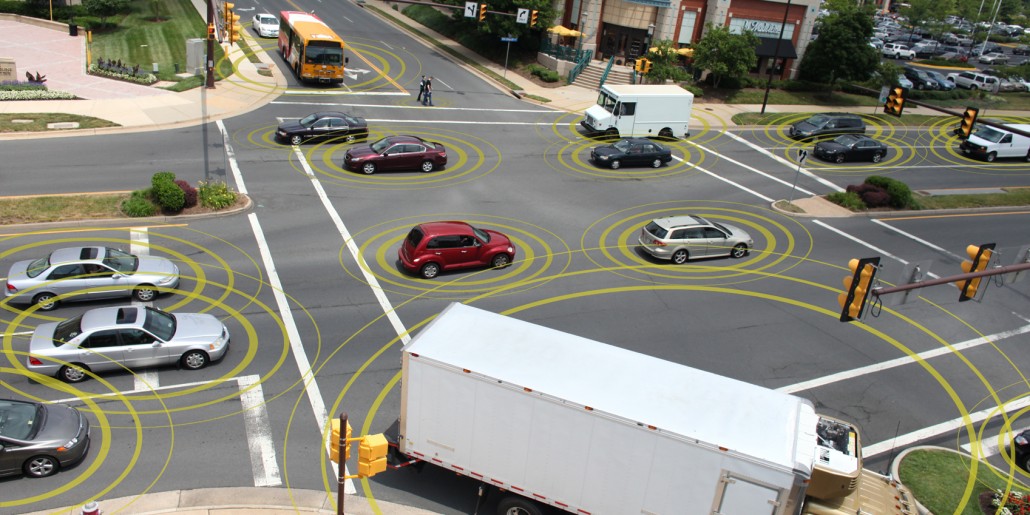IoT Connected Vehicle Testbed in My Backyard
Ann-Marie Johnson
Courtesy of Ann-Marie Johnson, President at NeoBridge
Image Courtesy of U.S. DOT
Unbeknownst to me, I have been driving nearly daily on a connected- vehicle and connected-infrastructure testbed. How cool to discover that an Internet of Things (IoT) pilot is running on a road I regularly travel!
The four square mile test bed is located just outside the Capital Beltway in Fairfax County, Virginia. For the DC area locals, it’s the stretch of I-66 between Nutley Street and the Beltway and parallel sections on Rt. 29 and Rt. 50. This map shows the 43 roadside equipment (RSE) locations and two additional wireless mobile units.
Map courtesy of Connected Vehicle/Infrastructure University Transportation Center
The Virginia Department of Transportation (VDOT) explained this location was selected because of its transportation challenges: high crash rates, poor air quality, and congestion. Yep! All true!
A second testbed, which is a closed highway, was also opened in 2012 in Southwest Virginia in Blacksburg, near Virginia Tech’s Transportation Institute. In addition to Virginia Tech, the University of Virginia (UVA), and Morgan State are all participating via the Connected Vehicle/Infrastructure University Transportation Center (CVI-UTC). The U.S. Department of Transportation’s research arm also operates its own set of connected vehicle testbeds.
Funding for this project includes $6 million from the federal government, $4 million from Virginia, $2M from Virginia Tech, and some other sources interested in better safety, air quality, less congestion, and less money on gas and infrastructure.
 My car is not equipped as are the twelve research vehicles plus a bus and semi-truck to collect information about acceleration, braking, emissions, and curve handling. Nor can my car receive information about stopped vehicles or dangerous road conditions ahead of me. The promise of the connected highway is really in my imagination and not a reality for me today.
My car is not equipped as are the twelve research vehicles plus a bus and semi-truck to collect information about acceleration, braking, emissions, and curve handling. Nor can my car receive information about stopped vehicles or dangerous road conditions ahead of me. The promise of the connected highway is really in my imagination and not a reality for me today.
Maybe my future car will be equipped to take advantage of vehicle to vehicle (V2V) and vehicle to infrastructure (V2I) capabilities blossoming as our physical and digital worlds merge. Even better, maybe that car will be self driving.
As a Northern Virginia resident, I welcome ways to reduce road congestion, improve air quality, and save me time and money on gas. I pay taxes, too, so maybe human ingenuity can innovate our way out of our historical solution for more highway capacity: more roads.
Transportation is necessary. With the IoT and some human ingenuity, we have a line of sight to more economical, environmentally safe, and quality of life solutions for the future.
Let’s get moving!
Ann-Marie Johnson is the founder of NeoBridge, a Washington, D.C. based advisory consulting firm that helps companies find new, profitable, sustainable revenue streams via innovative business models and disruptive technology such as internet of things, social, mobile, analytics, and cloud. She was most recently with Computer Sciences Corporation (CSC) where she was the offering manager for an innovative predictive analytic for extreme weather events, co-founded a federal climate and energy practice that had a 16% CAGR when government funding was flat, booked over $1.75B in new revenues for CSC, and successfully managed a P&L with $50M annual revenue.



